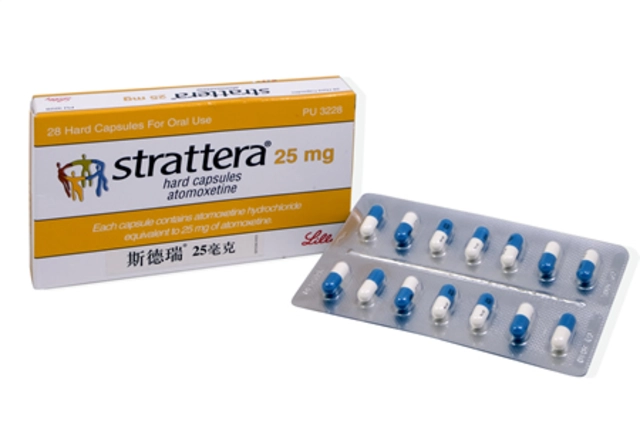Fibromyalgia pain isn’t like a sprained ankle or a headache that fades with rest. It’s a constant, deep ache that moves around your body-sometimes in your shoulders, then your hips, then your knees-without warning. It doesn’t show up on X-rays or blood tests. It doesn’t come from an injury or infection. For millions of people, especially women, this pain is their new normal. And for many, antidepressants are the first real tool that helps.
Why Antidepressants for Pain?
You might be confused. If you’re not depressed, why are you taking an antidepressant? The answer is simple: these drugs don’t just fix mood. They change how your brain handles pain.
Fibromyalgia isn’t caused by damaged muscles or joints. It’s caused by your nervous system turning up the volume on pain signals. Imagine your body’s alarm system stuck on high. Antidepressants like amitriptyline and duloxetine work by boosting serotonin and norepinephrine-chemicals that help calm those overactive nerves. They don’t cure fibromyalgia. They don’t make the pain disappear. But they can turn the volume down enough to make daily life possible.
It’s not magic. It takes time. Most people don’t feel better until after 4 to 6 weeks. Some need up to 12 weeks. That’s why so many quit too soon. They expect instant relief. But this isn’t a painkiller like ibuprofen. It’s a rewiring tool.
The Three Main Antidepressants Used
Not all antidepressants work the same for fibromyalgia. Three types are backed by solid research:
- Tricyclics (TCAs) - Amitriptyline and nortriptyline
- SNRIs - Duloxetine (Cymbalta) and milnacipran (Savella)
- SSRIs - Fluoxetine, sertraline (less effective, rarely first choice)
SSRIs like Prozac or Zoloft? They help with mood, but they don’t do much for the pain. Stick with TCAs or SNRIs.
Amitriptyline: The Old Favorite
Amitriptyline is the most prescribed drug for fibromyalgia in the U.S. Why? It’s cheap-often under $10 a month-and it works. Studies show about 47% of people get at least 30% pain relief. It’s especially good for sleep. Many patients say they finally sleep through the night after years of tossing and turning.
But the side effects? Real. Dry mouth, drowsiness, weight gain, constipation. Most people start at 5 mg at bedtime. That’s half a pill. Some never go higher. Others slowly bump up to 25-50 mg. The key is patience. The first week is rough. Drowsiness hits hard. But after a few weeks, many say the sleep benefits outweigh the side effects.
Duloxetine: The Balanced Option
Duloxetine (Cymbalta) is the most studied SNRI for fibromyalgia. It’s approved for both depression and pain. It doesn’t make you as sleepy as amitriptyline, which is why it’s popular with people who work or care for kids.
Studies show about 52% of users report moderate to good pain relief. But nausea is common-nearly half of users feel sick at first. Sweating, dizziness, and loss of appetite are also frequent. Most take it at 60 mg daily. It’s pricier than amitriptyline, but many find the side effects easier to live with.
Milnacipran: The High-Dose Player
Milnacipran (Savella) is only approved for fibromyalgia-not depression. That means it’s dosed higher: 100-200 mg a day, split into two doses. It’s designed to hit pain pathways harder.
It’s less sedating than amitriptyline and less nauseating than duloxetine. But headaches? Very common. About 53% of users report them. Constipation and increased heart rate are also issues. It’s expensive-$300-$500 a month-so most people try it only if the others don’t work.
What the Data Really Shows
Let’s cut through the noise. What do actual studies say?
On average, antidepressants reduce fibromyalgia pain by about 30% in half the people who take them. That’s not a cure. But for someone who starts with 8/10 pain, dropping to 5/10 can mean the difference between staying in bed and picking up your kid from school.
Only 10-20% of people get 50% pain relief. That’s the high end. Don’t expect to feel 100% better. Expect to feel *manageable* better.
Side effects cause 30% of people to quit within three months. Dry mouth, dizziness, nausea-these aren’t minor. They’re real barriers. But many who stick with it find the trade-off worth it.
One big win? Sleep. Amitriptyline improves sleep quality in 35% of users. SNRIs? Only 22%. If sleep is your biggest struggle, amitriptyline is still the top pick.

Who Benefits Most?
Not everyone responds the same. Antidepressants work best for people who have:
- Significant sleep problems
- Depression or anxiety alongside the pain
- Difficulty relaxing or staying calm
If your biggest issue is brain fog or memory lapses (what’s called “fibro fog”), antidepressants won’t help much. If your pain is mostly in one spot-like your lower back-and not widespread, they’re less likely to work.
They’re also not for everyone. If you’re over 65, have heart issues, or take other meds that affect your liver, your doctor needs to be extra careful. TCAs can be risky in older adults. SNRIs can raise blood pressure.
Real Stories, Real Trade-Offs
People on Reddit, patient forums, and support groups share what really happens:
- “Amitriptyline at 10mg let me sleep through the night for the first time in 8 years. But my mouth feels like cotton. I keep a water bottle by my bed.”
- “Duloxetine cut my pain from 8 to 5, but I felt emotionally numb. Like I was watching my life through glass.”
- “Milnacipran gave me energy to play with my kids, but the headaches were so bad I had to stop.”
These aren’t outliers. They’re common experiences. The goal isn’t perfection. It’s balance. Finding the drug that gives you the most benefit for the least cost-physically, emotionally, and financially.

How to Start (and Stick With It)
Here’s how to give antidepressants a fair shot:
- Start low. Amitriptyline: 5 mg at bedtime. Duloxetine: 30 mg daily. No more. Your body needs time to adjust.
- Go slow. Wait 2-3 weeks before increasing the dose. Most doctors increase every 2-4 weeks.
- Track your symptoms. Keep a simple log: pain level (1-10), sleep quality, side effects. Bring it to your next appointment.
- Don’t quit early. Wait at least 8 weeks before deciding it’s not working.
- Pair it with movement. Walking 20 minutes a day, stretching, or yoga makes antidepressants work better. Exercise is the #1 most effective treatment for fibromyalgia.
And if you feel worse? Talk to your doctor. Don’t just stop. Suddenly quitting can cause dizziness, nausea, or rebound pain.
What’s Missing? The Bigger Picture
Antidepressants are just one piece. The best outcomes come from combining them with:
- Regular low-impact exercise (walking, swimming, cycling)
- Cognitive behavioral therapy (CBT) to reframe pain thoughts
- Good sleep hygiene (no screens before bed, cool dark room)
- Stress reduction (mindfulness, breathing exercises)
Rheumatologists now agree: medication alone isn’t enough. 85% of clinics use a combo approach. Antidepressants help you get through the day. Exercise helps you get your life back.
What’s Next?
There’s no new miracle drug on the horizon. The only new fibromyalgia medication in late-stage trials (as of late 2023) is capivasertib-but it’s still years away. Research is shifting away from new pills and toward better ways to use what we already have.
Genetic testing for how your body metabolizes drugs (CYP450 testing) is becoming more common. If you’re a slow metabolizer, standard doses can be too strong. A simple blood test might save you months of trial and error.
And the future? Drugs that target nerve signals more directly-like NMDA blockers-are in early trials. But for now, the tools we have are the best we’ve got.
Fibromyalgia pain doesn’t vanish. But with the right approach-medication, movement, and mindset-it can stop ruling your life.
Do antidepressants cure fibromyalgia?
No. Antidepressants don’t cure fibromyalgia. They help manage symptoms-mainly pain, sleep, and mood-by calming overactive pain signals in the nervous system. They’re a tool for living better, not a cure.
Why do I need an antidepressant if I’m not depressed?
These medications work on brain chemicals like serotonin and norepinephrine that control pain signals, not just mood. At low doses, they reduce pain without causing strong antidepressant effects. You’re using them for their pain-relieving properties, not to treat depression.
How long until antidepressants start working for fibromyalgia pain?
It usually takes 4 to 6 weeks to feel any benefit, and up to 12 weeks for full effect. Many people stop too early because they expect quick results. Patience is key. Don’t give up before the 8-week mark unless side effects are severe.
Which antidepressant is best for fibromyalgia?
Amitriptyline (a TCA) is the most effective for pain and sleep, especially at low doses. Duloxetine (an SNRI) is better for people who can’t tolerate drowsiness. Milnacipran is strong but expensive and can cause headaches. The best choice depends on your symptoms, side effect tolerance, and budget.
Can I stop taking antidepressants if I feel better?
Don’t stop suddenly. Even if you feel better, stopping abruptly can cause withdrawal symptoms like dizziness, nausea, or worsening pain. Talk to your doctor about slowly reducing the dose over weeks or months. Many people stay on a low maintenance dose long-term because the benefits outweigh the side effects.
Are there natural alternatives to antidepressants for fibromyalgia?
Exercise is the most effective natural treatment-walking, swimming, or yoga can reduce pain as much as medication. CBT, mindfulness, and good sleep habits also help. Supplements like magnesium or vitamin D may support overall health, but none replace antidepressants for moderate to severe pain. Don’t rely on supplements alone if your pain is disabling.
Why do some people say antidepressants made them feel emotionally flat?
Some people, especially on SNRIs like duloxetine, report feeling emotionally dulled or detached. This isn’t depression-it’s a side effect of how the drug affects brain chemistry. If this happens, talk to your doctor. Lowering the dose or switching to amitriptyline might help. Your emotional well-being matters as much as your physical pain.
If you’re struggling with fibromyalgia pain, remember: you’re not alone. Thousands are walking this same path. The goal isn’t to eliminate pain completely. It’s to find the combination of tools-medication, movement, and mindset-that lets you live a full life despite it.






Write a comment